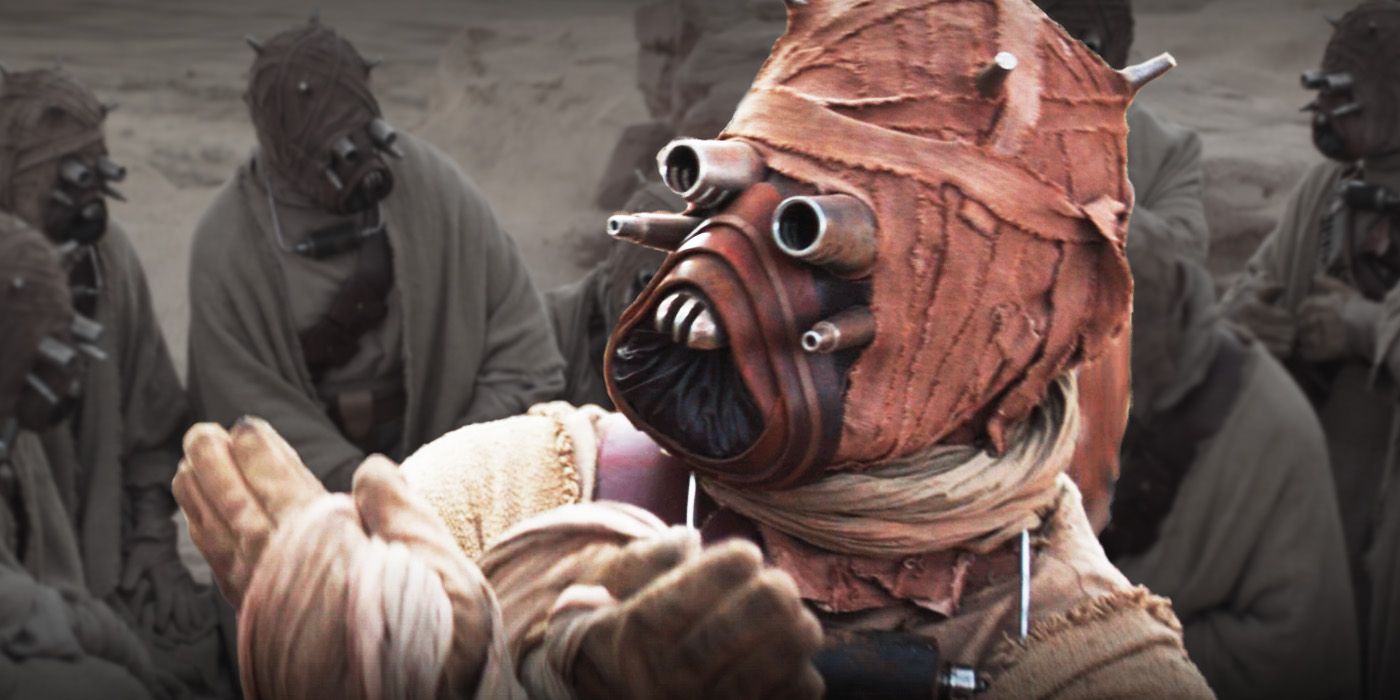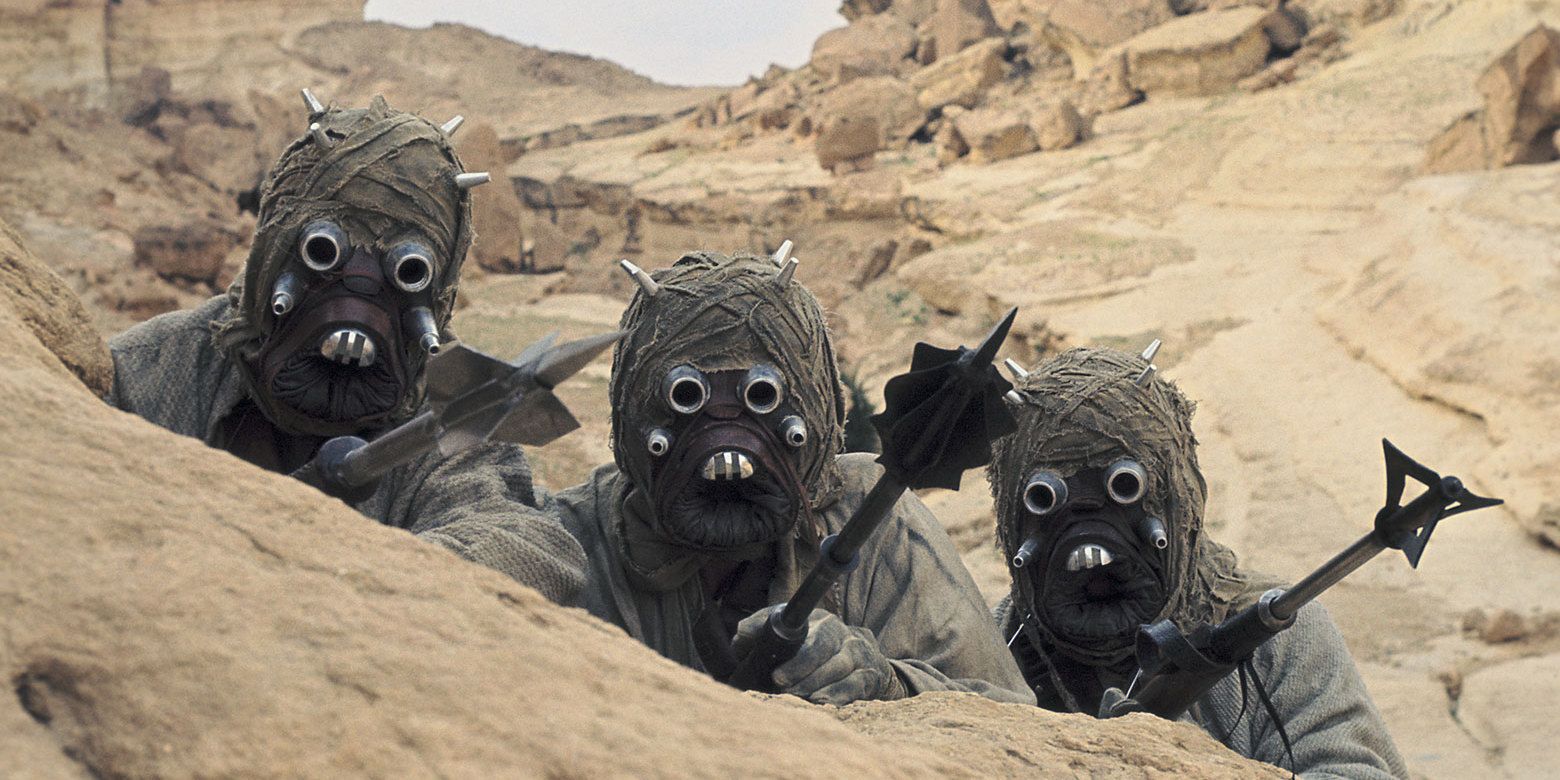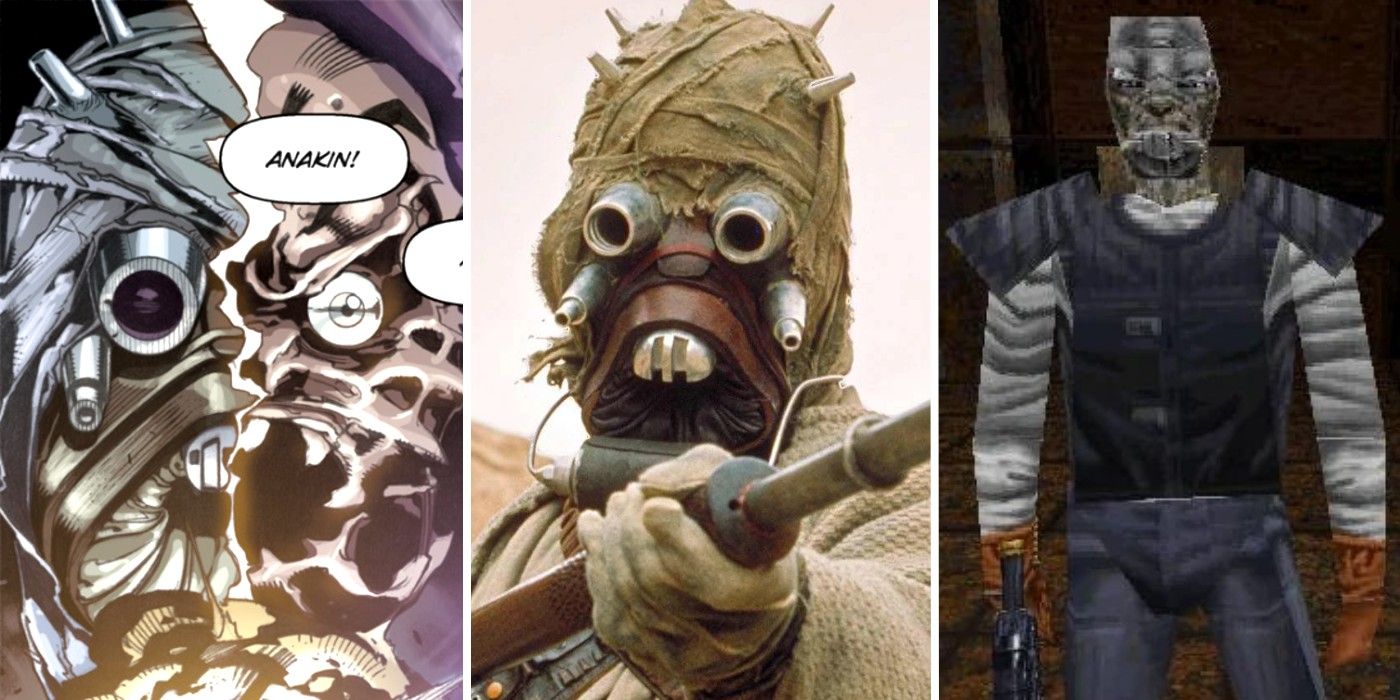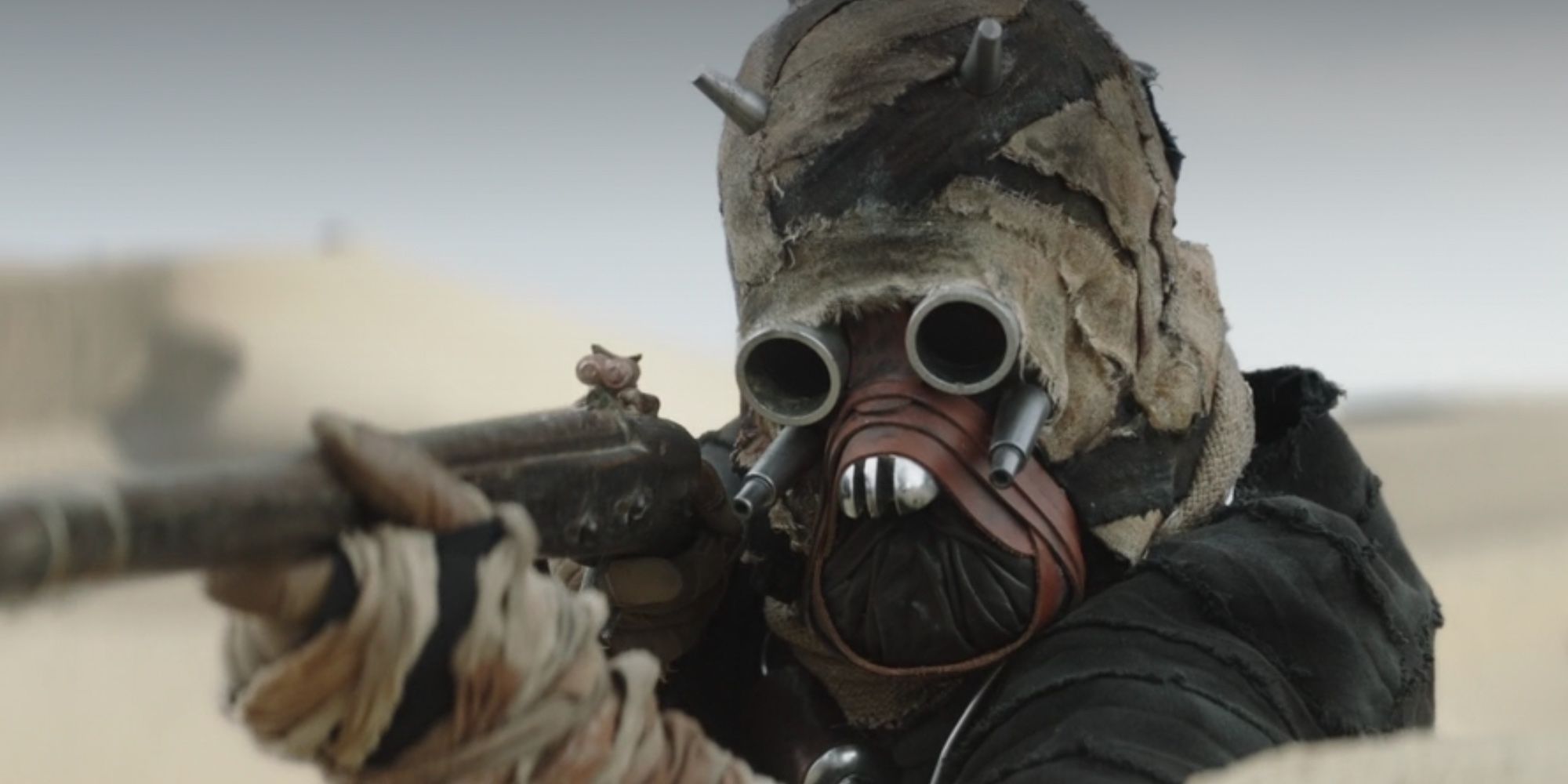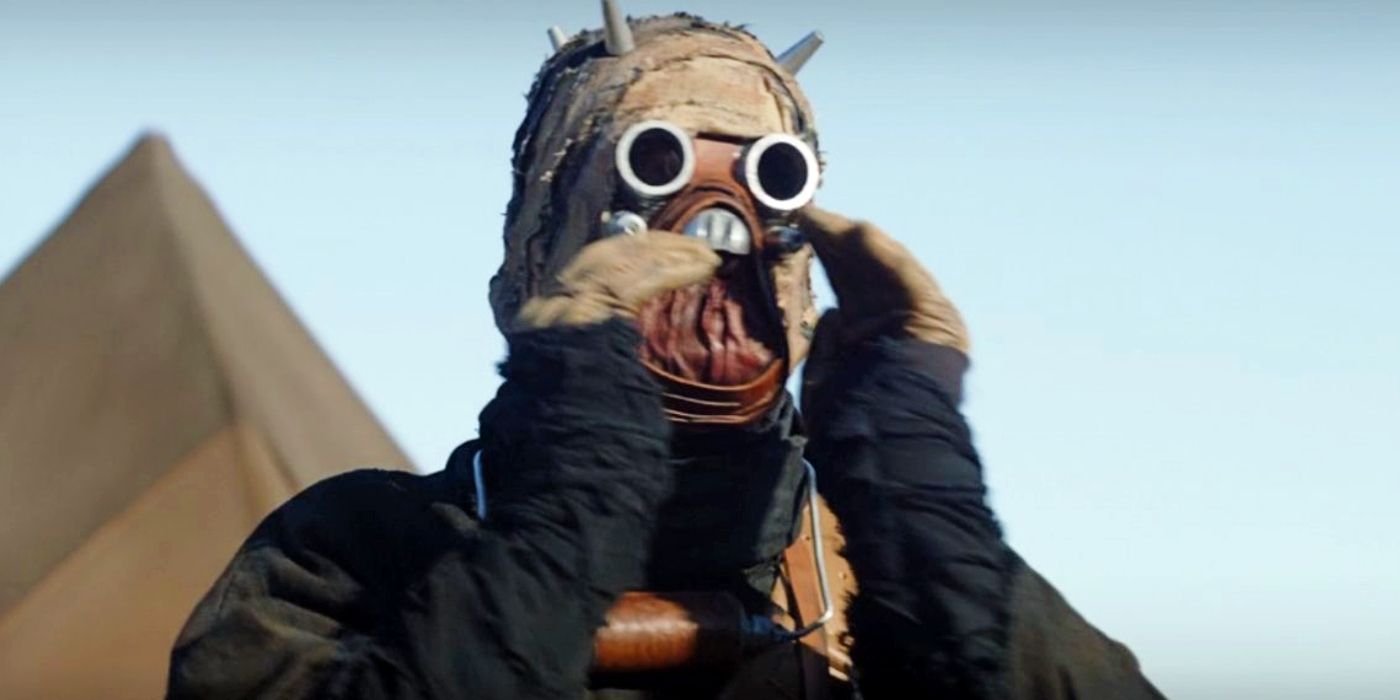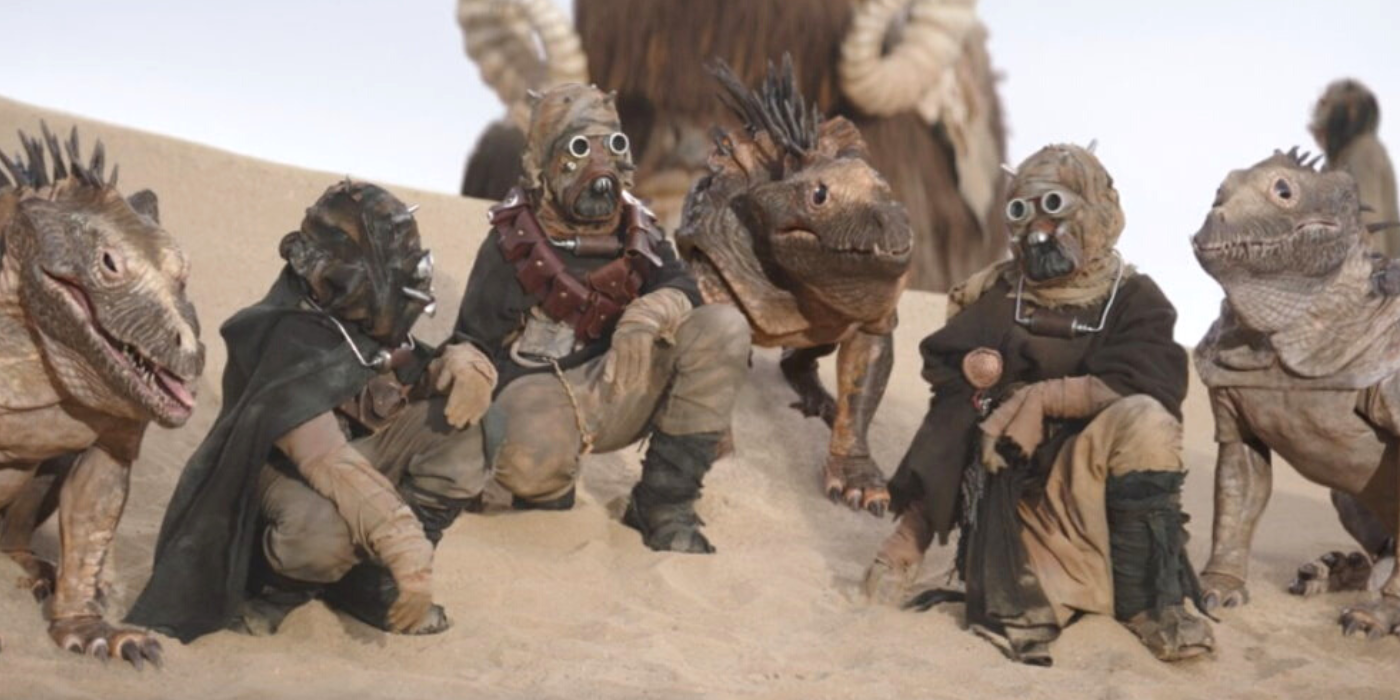Summary
- The Tusken Raiders of Tatooine have remained mysterious throughout the Star Wars series, but recent shows like The Mandalorian and The Book of Boba Fett are finally exploring their culture and history.
- The clothing and masks worn by Tusken Raiders were originally developed for survival in Tatooine's harsh climate, but have since become central to Tusken culture and ceremonies.
- Star Wars should never show an unmasked Tusken Raider, as it would dishonor their established traditions and remove the mystery and intrigue that make them iconic in the Star Wars universe.
Introduced in the first Star Wars film, the Tusken Raiders of Tatooine remain mysterious to the present day, but their secrets are gradually being revealed. When George Lucas created the first Star Wars film, one thing that stood out was the depth of its world-building. The first act spent a great deal of time on Tatooine, described by Luke Skywalker as the planet farthest from the galaxy's bright center, and fleshed it out in remarkable depth. However, no Star Wars movie or TV show has shown a Tusken Raider's face, and many viewers still want to know what they look like behind their masks.
Clearly dangerous, these desert tribesmen threatened Luke but were driven off when Obi-Wan Kenobi intervened and issued a cry mimicking that of a Krayt Dragon (as seen in Mandalorian season 2). Star Wars has since returned to Tatooine many times, notably in Lucas' Star Wars: Episode II - Attack of the Clones, where they were responsible for the death of Anakin Skywalker's mother. But in truth they haven't really been fleshed out until recent years, with the Disney+ shows The Mandalorian and The Book of Boba Fett treating Tuskens as real, three-dimensional characters and finally exploring Tusken culture and history.
The Evolution Of Tusken Raiders
The Tuskens evolved on Tatooine, and it's reasonable to assume their heavy clothing and distinctive masks were originally something of a survival mechanism, a way of enduring the changing climate, especially given that Tatooine's oceans vanished. Their garb has become as much ceremonial as practical over the millennia, and like Mandalorians, it is forbidden for an unmasked Tusken Raider to be seen by anyone except in private circumstances, such as when with their significant others. Although Tusken Raiders without masks or goggles have been glimpsed in the old Expanded Universe, notably in the 1997 video game Jedi Knight: Dark Forces II, these were erased from canon when Disney acquired Lucasfilm in 2012.
What Tusken Raiders Look Like Under Their Masks
Jedi Knight: Dark Forces II featured a mercenary gang of Tusken Raiders, unmasked, called the Grave Tuskens. These unmasked Tusken Raiders had a gray-furred, feline appearance. This fits well with accounts that the Tuskens and Jawas are evolutionary cousins, with the Jawas described as rodent-like in Legends (a trait introduced to canon during The Book of Boba Fett). The two being similar in appearance makes sense, as the Tusken Raiders evolved on Tatooine alongside the hooded Jawas. The only other occasion where a Tusken unmasked was in Star Wars: Republic #62, a comic book story in which Anakin Skywalker had nightmarish visions of a Tusken unmasking to reveal a face reminiscent of the Predator.
There's long been speculation that, like Mandalorians, Tuskens are not a single race, but different races sharing the same culture. Legends supported this theory in Star Wars: Republic #59, where a Tusken Raider turned Jedi Master, A'Sharad Hett, who later became the Sith Lord Darth Krayt, removed his face covering in front of Anakin. However, this happened so that the "Tusken" could reveal he was actually a human like Anakin. Hett was the son of a human Jedi Knight, Sharad Hett, who had integrated himself into the Tuskens, and a human woman who was captured when she was young and raised as one of them. In canon, The Book of Boba Fett revealed that Boba Fett was integrated into a Tusken tribe for a time, although it seemed to be very unusual in Tusken culture, and he never wore a mask.
Why Tusken Raiders Wear Masks In Star Wars Stories
Tusken clothing and masks were originally developed to help survive the harsh Tatooine climate. The mouth grills are designed to prevent precious moisture from leaving their bodies, while the goggles likely serve to protect their vulnerable eyes from harsh sandstorms on Tatooine. Although the garb and masks began as functional, they have become central to Tusken culture; the youngest children seem to be hidden from outsiders, and then they are ceremonially bandaged so they are safe to go out into Tatooine's deserts, initially wearing basic robes and the customary mask. It's possible there are numerous ceremonies where tribesmen apply bandages to a growing Tusken, like Boba Fett, and their masks may be replaced as well.
Various Tusken tribes look different, taking their own unique approaches to their clothing and masks. Those seen in the first A New Hope, Star Wars: Episode II - Attack of the Clones and The Mandalorian seasons 1 and 2 wore tan robes and similar equipment, but The Book of Boba Fett's Tusken tribe was slightly different. Each wore a different mix of tan and black robes and bandages, giving them a unique look and differentiation. One fighter was clad almost entirely in black, perhaps indicating their combat prowess and experience, while some had unusual wrapping around their shoulders or outer robes fashioned like long skirts. The tribal leader's outfit was particularly complex, likely indicating their rank.
How Star Wars Has Changed Tusken Raiders' Culture In Modern Lore
Star Wars traditionally viewed the Tuskens through the eyes of Tatooine's human inhabitants, which meant they were underdeveloped and narratively treated as lesser beings. This was particularly notable in Attack of the Clones, where Anakin Skywalker slaughtered Tuskens in a fit of grief and rage after his mother's death. While this was certainly presented as a step along Anakin's road to the dark side, it wasn't treated with enough significance given his admission that he killed men, women, and children like animals.
But this traditional portrayal has changed in recent years. The Mandalorian saw Din Djarin use sign language to communicate with Tuskens, and in season 2, one tribe formed a truce with Tatooine Marshal Cobb Vanth and the town of Mos Pelgo. All this established the precedent for treating Tuskens as individuals and actually exploring their culture and society. The Book of Boba Fett took this opportunity in flashbacks that showed how Boba fit in with another tribe of Tuskens. Star Wars desert savages have now become one of their most intriguing and complex races.
Why Star Wars Should Never Show An Unmasked Tusken Raider
If there is one thing controversy around Star Wars' handling of Boba Fett proves, it's that masked characters should remain masked. Humans have been fascinated with masked characters since the days of Ancient Greek theatre. Every culture has masks of some form – they add mystery and often hold great social significance. Removing their masks would not only dishonor their established fictional ways and traditions, but it would also remove the mystery that has made the fictional species so endearing to audiences. Boba Fett and Din Djarin removing their masks had ramifications not only in-universe but for production of future Star Wars projects, purely because of how much the seemingly small decision disrupted established canon.
The Book of Boba Fett explored Tusken culture in more depth than ever before but stopped short of unmasking them, which was a wise decision. As soon as the Tusken Raiders are seen unmasked, nearly half a century of speculation ends. There's very little that Disney and Lucasfilm could reveal under the bandages and goggles that would seem a worthwhile payoff, especially since the Tusken's masks are themselves iconic by this point. Many simply don't want to find out what an unmasked Tusken Raider looks like, because it removes the mystery and intrigue that made them central to the Star Wars aesthetic in the first place.

